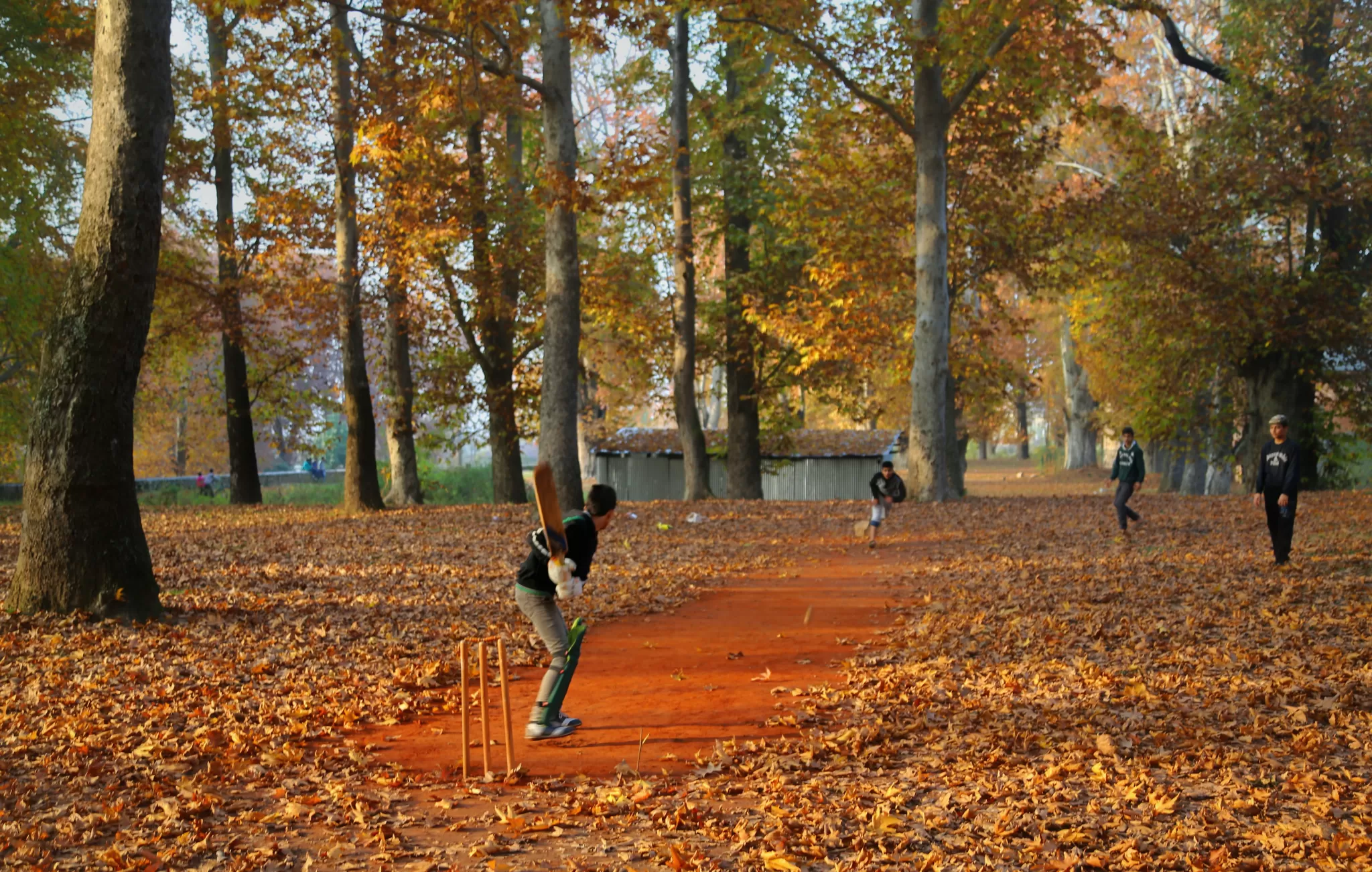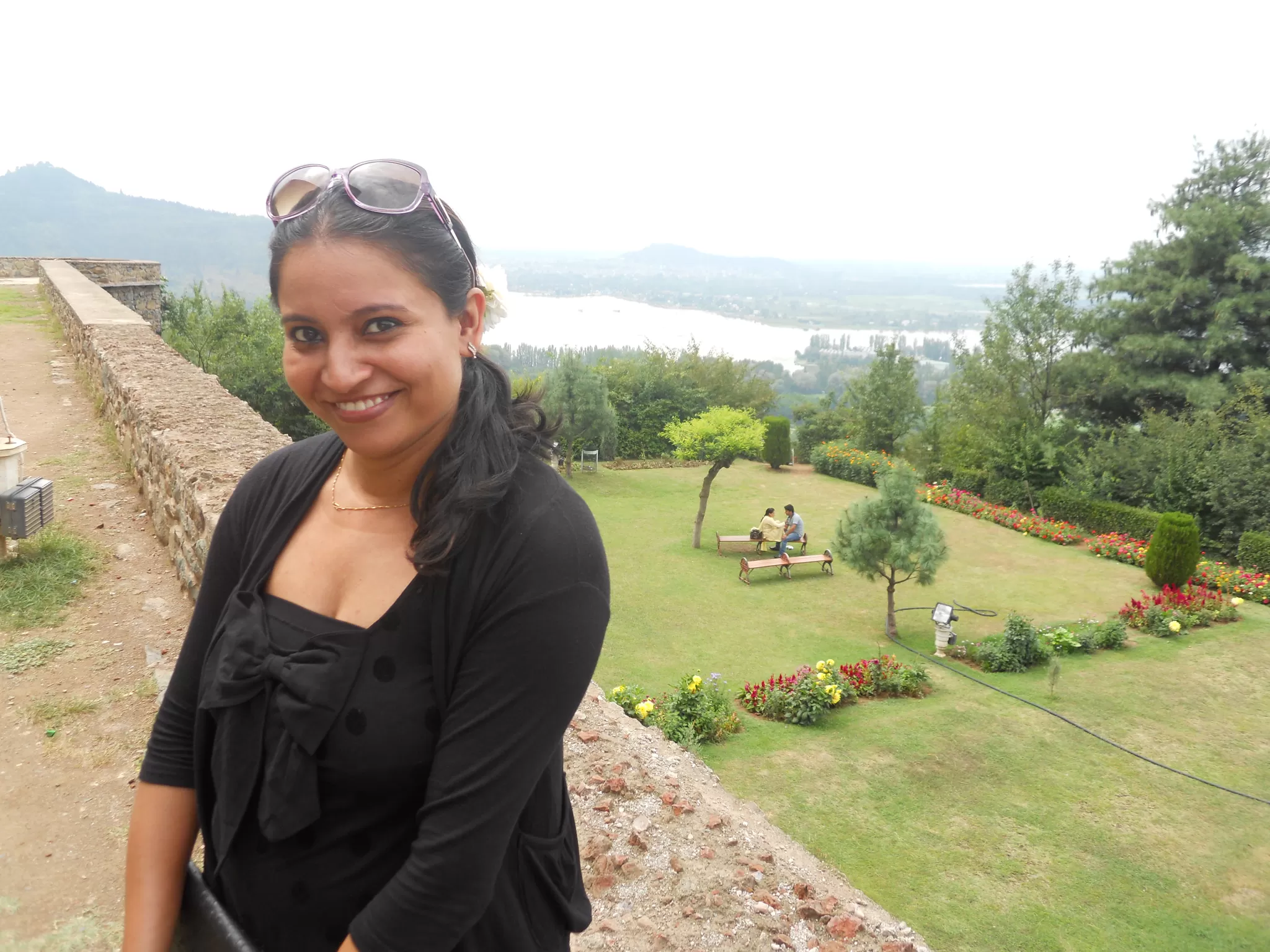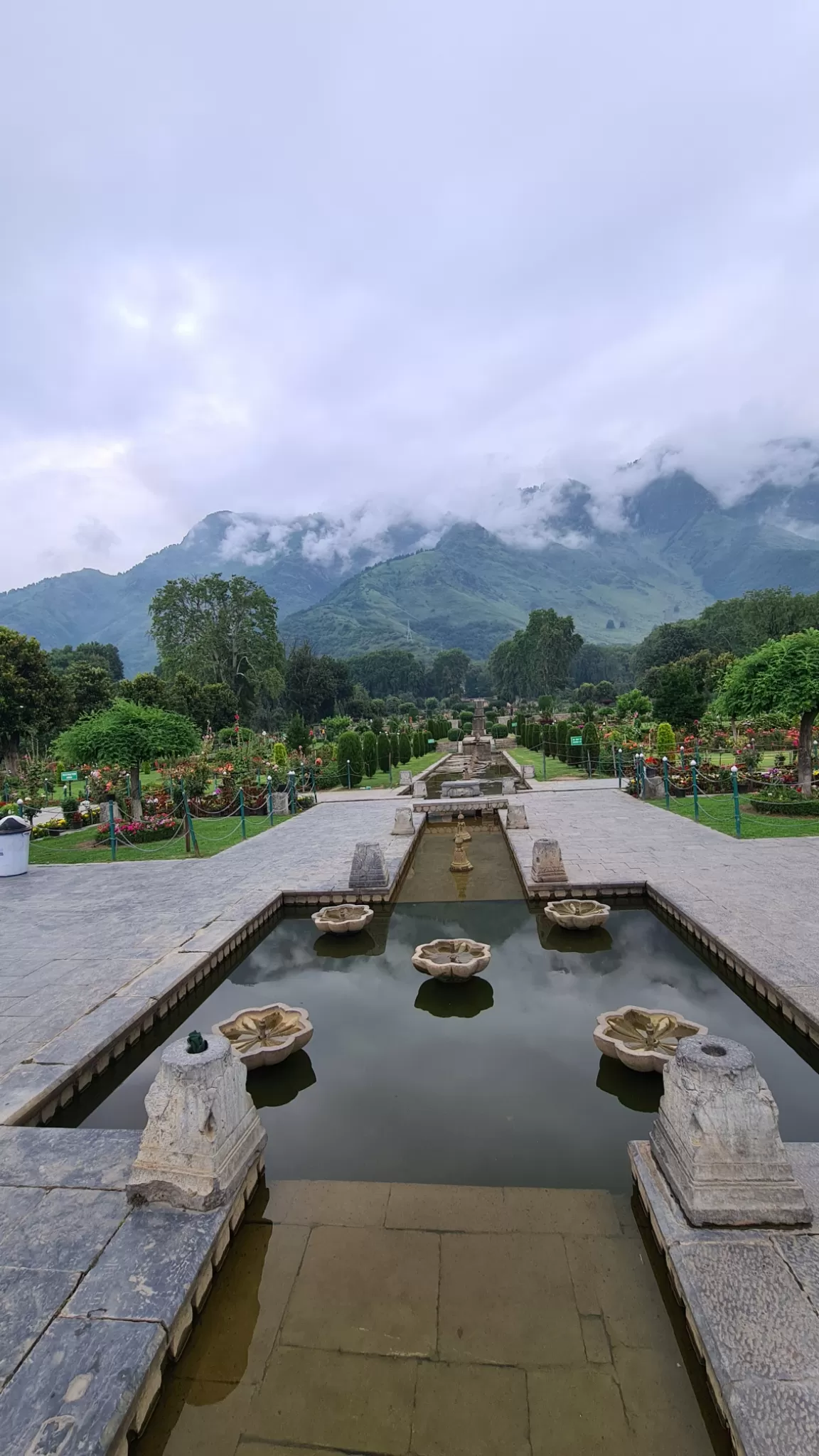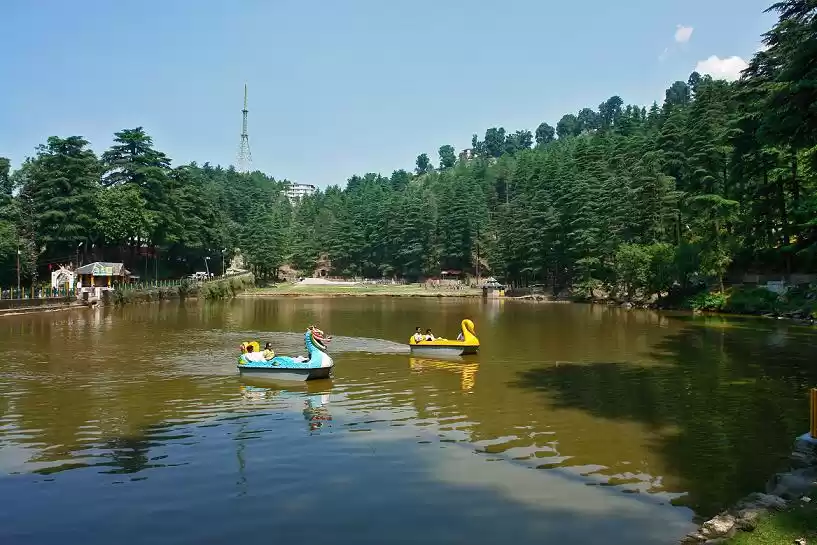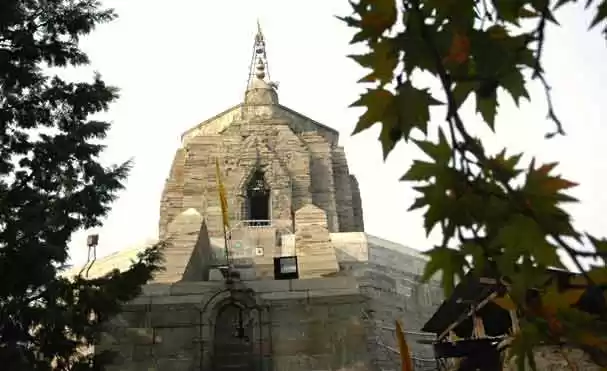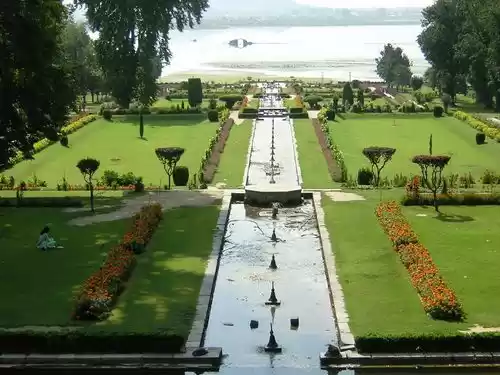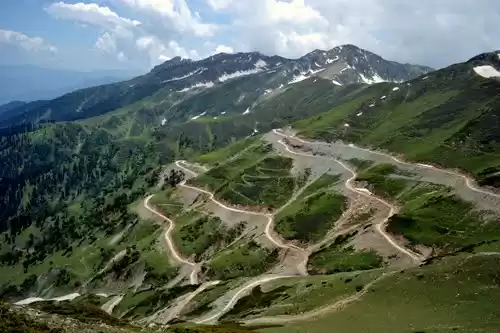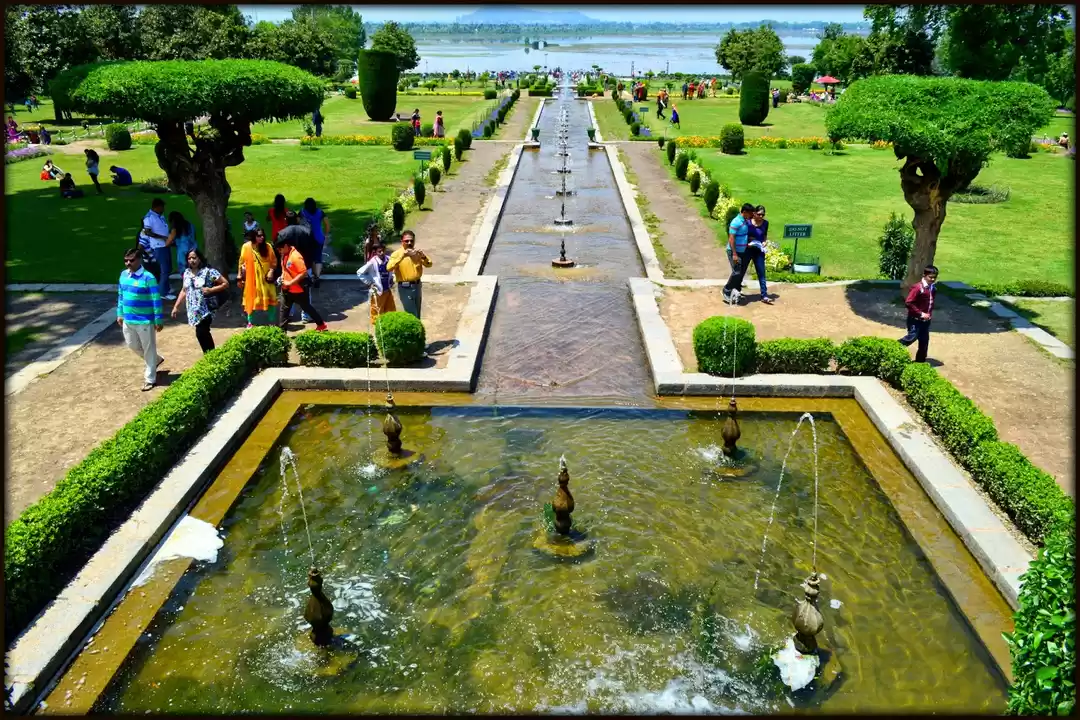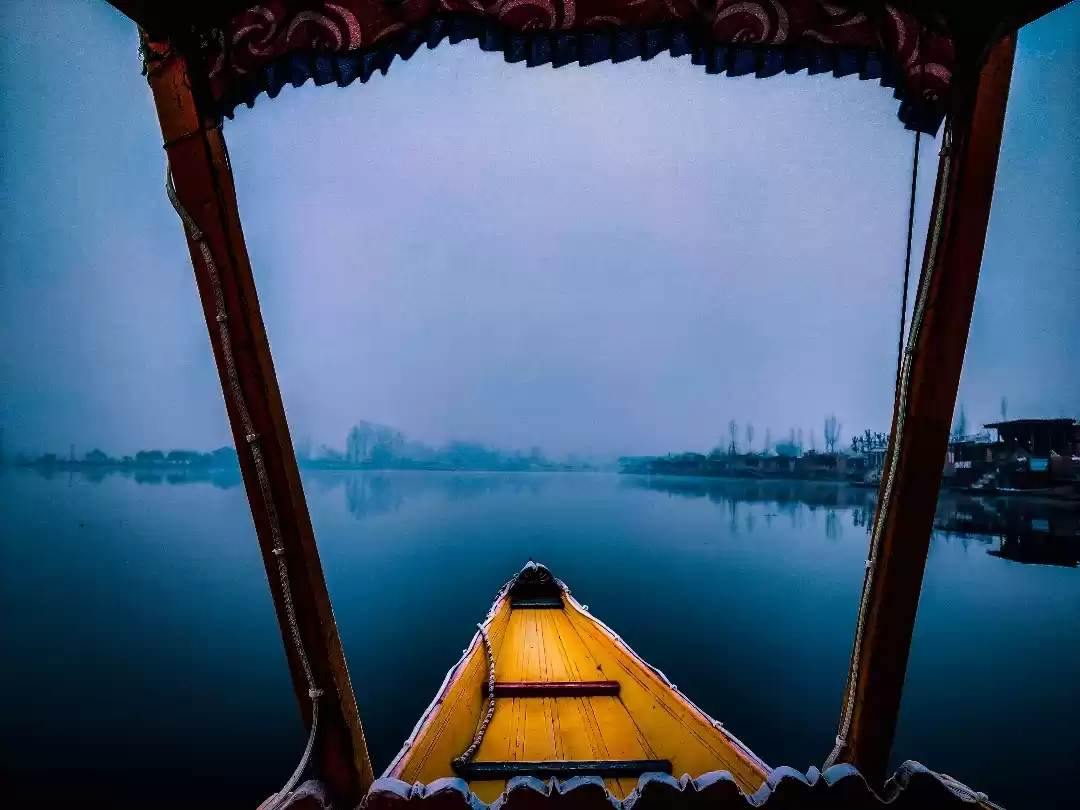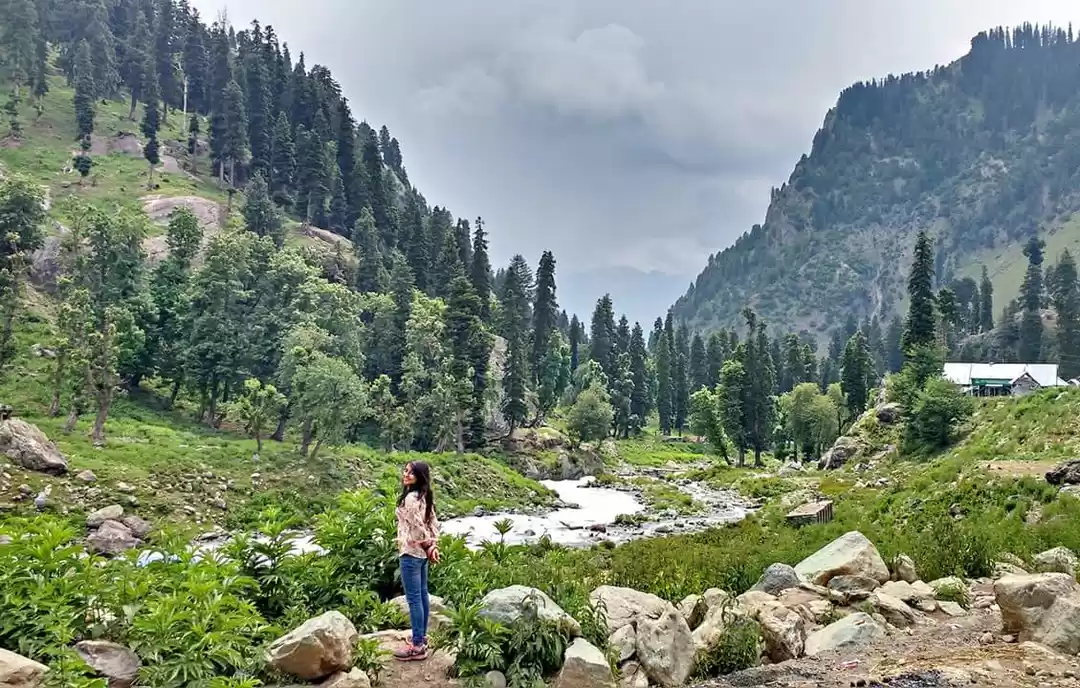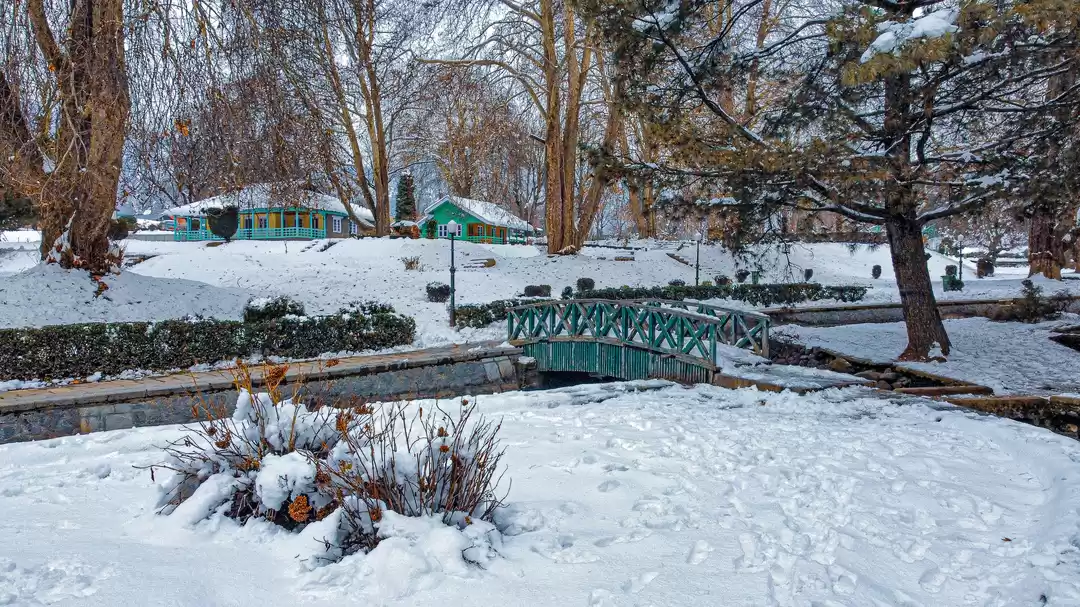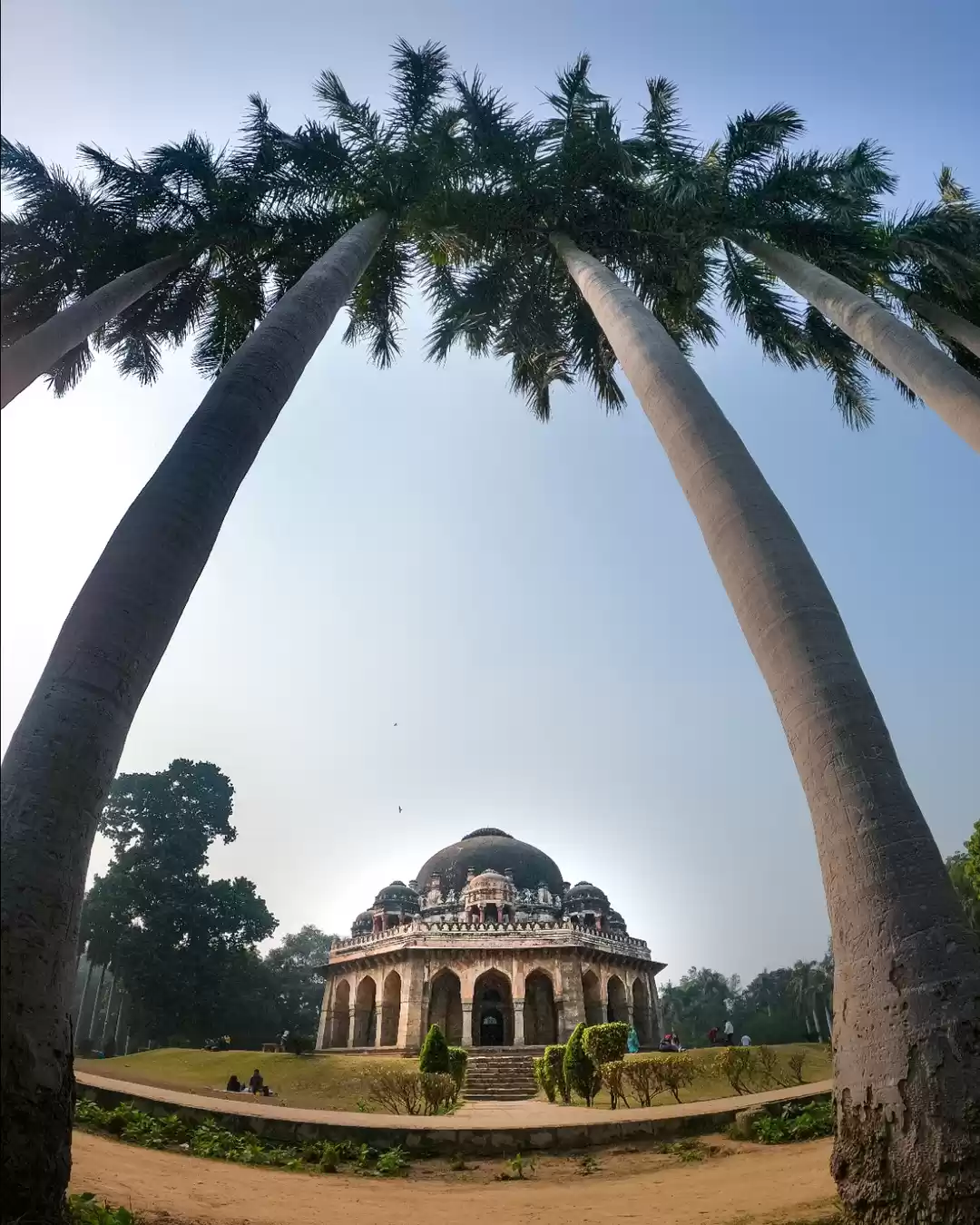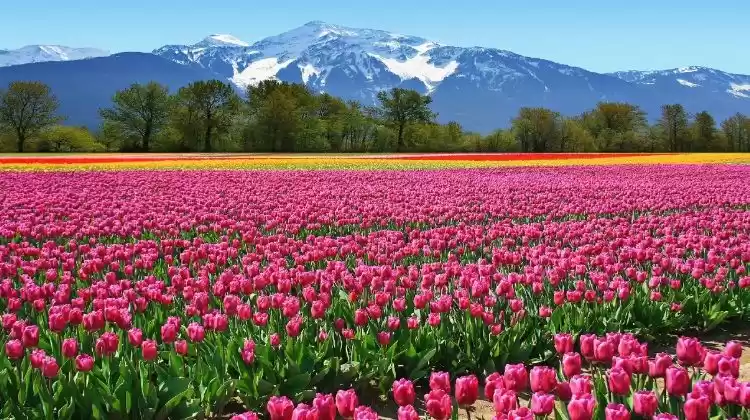Nishat Garden, also known as Nishat Bagh, is one of the most beautiful and famous Mughal gardens in Srinagar, Kashmir. Located on the banks of the Dal Lake, Nishat Garden is a masterpiece of architecture, design, and nature. It was built by Asif Khan, the brother of Nur Jahan, the wife of Emperor Jahangir, in the 17th century. Nishat Garden is also known as the Garden of Bliss, as it symbolizes the joy and happiness of the Mughals. In this article, we will explore the history, architecture, and attractions of Nishat Garden, and also provide some useful information and tips for visiting this garden of bliss.

History of Nishat Garden
Nishat Garden was built in 1633 by Asif Khan, who was the governor of Kashmir and the brother of Nur Jahan, the most influential empress of the Mughal Empire. Asif Khan was inspired by the Persian gardens and wanted to create a paradise on earth for his sister and her husband, Emperor Jahangir. He chose a site on the eastern shore of the Dal Lake, which offered a panoramic view of the lake, the mountains, and the city. He designed the garden as a series of terraces, each representing a different aspect of the Mughal life and culture. He also planted a variety of flowers, fruits, and trees, and installed a water channel, fountains, and pavilions to enhance the beauty and elegance of the garden.
Nishat Garden was admired and envied by many, especially by Shah Jahan, the son of Jahangir and Nur Jahan, and the builder of the Taj Mahal. According to a legend, when Shah Jahan visited Nishat Garden for the first time, he was so impressed by its splendor that he ordered the water supply to be cut off, as a sign of his displeasure and jealousy. Asif Khan, however, was clever and loyal, and he quickly restored the water supply by apologizing and praising Shah Jahan's magnificence. Shah Jahan was pleased and forgave Asif Khan, and also bestowed him with gifts and honors.
Nishat Garden witnessed many historical events and personalities, such as the Mughal emperors, the Afghan governors, the Sikh maharajas, and the British viceroys. It also survived many natural and man-made calamities, such as floods, earthquakes, wars, and vandalism. It was restored and renovated several times, by different rulers and authorities, to preserve its original glory and charm. Today, Nishat Garden is a protected monument and a popular tourist attraction, attracting thousands of visitors every year.
Architecture of Nishat Garden
Nishat Garden is a masterpiece of architecture, design, and nature. It covers an area of about 12 hectares, and is divided into 12 terraces, each representing a zodiac sign or a month of the Islamic calendar. The terraces are arranged in a descending order, from the highest to the lowest, and are connected by stone steps and pathways. The lowest terrace is the closest to the Dal Lake, and the highest terrace is the farthest from the lake, and also the most elevated and prominent.
The main feature of Nishat Garden is the water channel, which runs through the center of the garden, from the highest to the lowest terrace. The water channel is fed by a natural spring, and is adorned with fountains, jets, and cascades, creating a soothing and refreshing sound and sight. The water channel also symbolizes the river of paradise, as described in the Quran.
The terraces are also decorated with pavilions, which are small structures with domes, arches, and pillars, built for resting and relaxing. The pavilions are made of stone, wood, and marble, and are embellished with carvings, paintings, and inscriptions. The most notable pavilions are the Zenana Mahal, the Diwan-e-Khas, and the Diwan-e-Aam, which are located on the highest, the second highest, and the third highest terraces, respectively. The Zenana Mahal was the private residence of the royal ladies, the Diwan-e-Khas was the private audience hall of the emperor, and the Diwan-e-Aam was the public audience hall of the emperor.
The terraces are also planted with a variety of flowers, fruits, and trees, such as roses, tulips, lilies, chrysanthemums, cherries, apricots, almonds, walnuts, pines, cypresses, and willows. The flowers and fruits add color and fragrance to the garden, and also provide shade and shelter to the visitors. The trees also create a contrast and harmony with the water and the mountains, and also reflect the seasons and the moods of the garden.
How to Reach Nishat Garden
Nishat Garden is located on the eastern shore of the Dal Lake, about 11 km from the city center of Srinagar. There are different modes of transport and routes to reach Nishat Garden from Srinagar or other places. Some of the common and convenient modes of transport and routes are:
- Bus: There are regular and frequent buses that run from the Lal Chowk bus stand in Srinagar to Nishat Garden. The bus fare is about Rs. 20 per person, and the travel time is about 30 minutes. The bus route passes through some of the famous landmarks and attractions of Srinagar, such as the Dal Gate, the Boulevard Road, the Nehru Park, the Nagin Lake, etc.
- Taxi: There are many taxis and cabs that are available from the Srinagar airport, the railway station, or the city center to Nishat Garden. The taxi fare is about Rs. 300 to Rs. 500 per trip, depending on the type of vehicle and the bargaining skills. The travel time is about 20 minutes. The taxi route is similar to the bus route, but faster and more comfortable.
- Auto-rickshaw: There are also many auto-rickshaws or tuk-tuks that are available from the Srinagar city center or the nearby areas to Nishat Garden. The auto-rickshaw fare is about Rs. 150 to Rs. 200 per trip, depending on the distance and the bargaining skills. The travel time is about 25 minutes. The auto-rickshaw route is also similar to the bus route, but cheaper and more flexible.
- Shikara: There are also many shikaras or wooden boats that are available from the Dal Lake or the Nagin Lake to Nishat Garden. The shikara fare is about Rs. 500 to Rs. 1000 per trip, depending on the number of passengers and the bargaining skills. The travel time is about 45 minutes. The shikara route is the most scenic and romantic way to reach Nishat Garden, as it offers a stunning view of the lake, the mountains, and the houseboats.
Some tips and suggestions for planning and booking the transport to Nishat Garden are:
- The best time of the day to visit Nishat Garden is in the morning or in the evening, when the weather is pleasant and the crowd is less. The garden is open from 9 am to 7 pm in summer, and from 10 am to 5 pm in winter.
- The best route to reach Nishat Garden is the shikara route, as it is the most scenic and romantic way to enjoy the beauty and charm of the Dal Lake and the garden. However, it is also the most expensive and time-consuming way, so it is advisable to book the shikara in advance and negotiate the fare and the duration of the trip.
- The best service provider for the transport to Nishat Garden is the Jammu and Kashmir Tourism Development Corporation (JKTDC), which offers reliable and affordable transport options, such as buses, taxis, and shikaras. The JKTDC also provides online booking and payment facilities, and also has offices and counters at the Srinagar airport, the railway station, the bus stand, and the Dal Lake.
Best Time to Visit Nishat Garden
Nishat Garden is a year-round destination, as it offers a different and unique experience in each season and month. However, some of the best seasons and months to visit Nishat Garden are:
- Spring (March to May): Spring is the most beautiful and colorful season to visit Nishat Garden, as it is the time when the flowers and fruits are in full bloom, and the garden is filled with fragrance and freshness. The temperature is mild and pleasant, ranging from 10°C to 25°C, and the rainfall is moderate, ranging from 50 mm to 100 mm. The best months to visit Nishat Garden in spring are April and May, when the tulips, the roses, the lilies, and the cherries are at their peak, and the garden hosts the famous Tulip Festival, which showcases the largest collection of tulips in Asia.
- Summer (June to August): Summer is the most popular and crowded season to visit Nishat Garden, as it is the time when the weather is warm and sunny, ranging from 15°C to 30°C, and the rainfall is low, ranging from 20 mm to 40 mm. The best months to visit Nishat Garden in summer are June and July, when the garden is lush and green, and the water channel and the fountains are refreshing and soothing. The garden also offers a spectacular view of the sunset over the Dal Lake, and the moonlight over the mountains.
Autumn (September to November): Autumn is the most serene and romantic season to visit Nishat Garden, as it is the time when the leaves and flowers change their colors, and the garden is painted with shades of red, yellow, orange, and brown. The temperature is cool and comfortable, ranging from 5°C to 20°C, and the rainfall is high, ranging from 80 mm to 120 mm. The best months to visit Nishat Garden in autumn are September and October, when the garden is calm and quiet, and the water channel and the fountains are sparkling and clear. The garden also offers a splendid view of the snow-capped mountains and the misty lake.
- Winter (December to February): Winter is the most adventurous and challenging season to visit Nishat Garden, as it is the time when the garden is covered with snow and ice, and the temperature is cold and harsh, ranging from -5°C to 10°C, and the rainfall is low, ranging from 10 mm to 30 mm. The best months to visit Nishat Garden in winter are December and January, when the garden is frozen and white, and the water channel and the fountains are still and silent. The garden also offers a contrast and harmony with the warm and cozy houseboats and the shikaras on the lake.

Timings, Entry Fee, and Other Information
Nishat Garden is open to the public from 9 am to 7 pm in summer, and from 10 am to 5 pm in winter. The entry fee is Rs. 10 for Indian nationals, and Rs. 100 for foreign nationals. The parking fee is Rs. 20 for two-wheelers, and Rs. 50 for four-wheelers. The security is tight and strict, and the visitors are required to undergo a frisking and a metal detector check before entering the garden. The facilities include toilets, drinking water, benches, dustbins, and souvenir shops.
Some of the rules and regulations, the dos and don'ts, and the etiquette of visiting Nishat Garden are:
- Dress appropriately and modestly, as the garden is a cultural and historical site, and also respect the local customs and traditions.
- Do not litter or damage the garden, as it is a protected monument and a natural heritage, and also dispose of the waste properly and responsibly.
- Do not pluck or harm the flowers, fruits, and trees, as they are part of the beauty and charm of the garden, and also respect the biodiversity and the environment.
- Do not feed or disturb the birds, animals, and fish, as they are part of the ecosystem and the harmony of the garden, and also respect the wildlife and the nature.
- Do not make noise or play loud music, as it may disturb the peace and tranquility of the garden, and also respect the other visitors and the locals.
- Do not take photos or videos without permission, as it may violate the privacy and the security of the garden, and also respect the rules and the authorities.
Things to Do in and around Nishat Garden
Nishat Garden is not only a place to see, but also a place to do. There are various activities and attractions that one can enjoy in and around Nishat Garden, such as:
- Boating: One of the most popular and enjoyable activities in and around Nishat Garden is boating on the Dal Lake, which is also known as the Jewel in the Crown of Kashmir. The visitors can hire a shikara or a houseboat, and explore the beauty and charm of the lake, the mountains, and the city. The visitors can also enjoy the sunrise, the sunset, the moonlight, and the stars on the lake, and also witness the floating market, the floating garden, and the floating post office on the lake.
- Photography: One of the most creative and inspiring activities in and around Nishat Garden is photography, as the garden offers a stunning and diverse view of the nature, the architecture, and the culture. The visitors can capture the beauty and the essence of the garden, the lake, the mountains, and the city, and also express their emotions and feelings through their photos. The visitors can also take selfies and group photos, and share their memories and experiences with their friends and family.
- Shopping: One of the most fun and exciting activities in and around Nishat Garden is shopping, as the garden is surrounded by many shops and stalls, selling a variety of products and souvenirs, such as the Kashmiri handicrafts, the Kashmiri carpets, the Kashmiri shawls, the Kashmiri dry fruits, the Kashmiri spices, the Kashmiri saffron, etc. The visitors can buy some of the unique and authentic items, and also bargain and negotiate the prices, and also learn about the history and the culture of the Kashmiri people.
- Eating: One of the most delicious and satisfying activities in and around Nishat Garden is eating, as the garden is near to many restaurants and cafes, serving a variety of cuisines and dishes, such as the Kashmiri Wazwan, the Kashmiri Kahwa, the Kashmiri Rogan Josh, the Kashmiri Dum Aloo, the Kashmiri Yakhni, the Kashmiri Phirni, etc. The visitors can taste some of the mouth-watering and finger-licking food, and also experience the hospitality and the warmth of the Kashmiri people.
Nearby Places to Visit from Nishat Garden
Nishat Garden is not only a destination, but also a gateway. There are many other places to visit from Nishat Garden, such as:
- Shalimar Bagh: Shalimar Bagh is another famous and beautiful Mughal garden in Srinagar, which is located about 4 km from Nishat Garden. It was built by Emperor Jahangir for his wife Nur Jahan, in 1619. It is also known as the Garden of Love, as it symbolizes the romance and the passion of the Mughals. It has four terraces, each representing a different theme, such as the public garden, the royal garden, the private garden, and the zenana garden. It also has a water channel, fountains, pavilions, flowers, fruits, and trees, similar to Nishat Garden, but larger and more elaborate. It is also a popular tourist attraction, and a must-visit place from Nishat Garden.
- Pari Mahal: Pari Mahal is a historical and mystical monument in Srinagar, which is located about 3 km from Nishat Garden. It was built by Prince Dara Shikoh, the son of Shah Jahan, in the 17th century. It is also known as the Palace of Fairies, as it was used as a school of astrology and a library of ancient books. It is a six-tiered structure, with a garden, a water tank, and a terrace, offering a splendid view of the Dal Lake and the city. It is also a protected monument and a cultural heritage, and a worth-seeing place from Nishat Garden.
- Chashme Shahi: Chashme Shahi is a small and charming Mughal garden in Srinagar, which is located about 2 km from Nishat Garden. It was built by Emperor Shah Jahan for his son Dara Shikoh, in 1632. It is also known as the Royal Spring, as it has a natural spring, which is believed to have medicinal and healing properties. It has three terraces, with a water channel, fountains, pavilions, flowers, and trees, similar to Nishat Garden, but smaller and simpler. It is also a peaceful and relaxing place, and a nice place to visit from Nishat Garden.
- Hazratbal Shrine: Hazratbal Shrine is a sacred and spiritual place in Srinagar, which is located about 5 km from Nishat Garden. It is a white marble mosque, which houses a holy relic, which is believed to be a hair of Prophet Muhammad. It was built by the Mughals, the Afghans, and the Dogras, in the 17th and 18th centuries. It is also known as the Dargah Sharif, as it is a place of pilgrimage and worship for the Muslims. It is also a place of harmony and tolerance for the people of different faiths and backgrounds, and a respectful place to visit from Nishat Garden.
Conclusion
Nishat Garden is a must-visit place in Srinagar, as it is one of the most beautiful and famous Mughal gardens in India. It is a masterpiece of architecture, design, and nature, and also a symbol of joy and happiness. It has 12 terraces, a water channel, fountains, pavilions, flowers, fruits, and trees, which offer a stunning and diverse view of the garden, the lake, the mountains, and the city.
It also has various activities and attractions, such as boating, photography, shopping, eating, etc., which make the visit more enjoyable and memorable. It also has many nearby places to visit, such as Shalimar Bagh, Pari Mahal, Chashme Shahi, Hazratbal Shrine, etc., which make the trip more complete and satisfying. Nishat Garden is a garden of bliss, and a paradise on earth, and a place that one should not miss in Srinagar.




